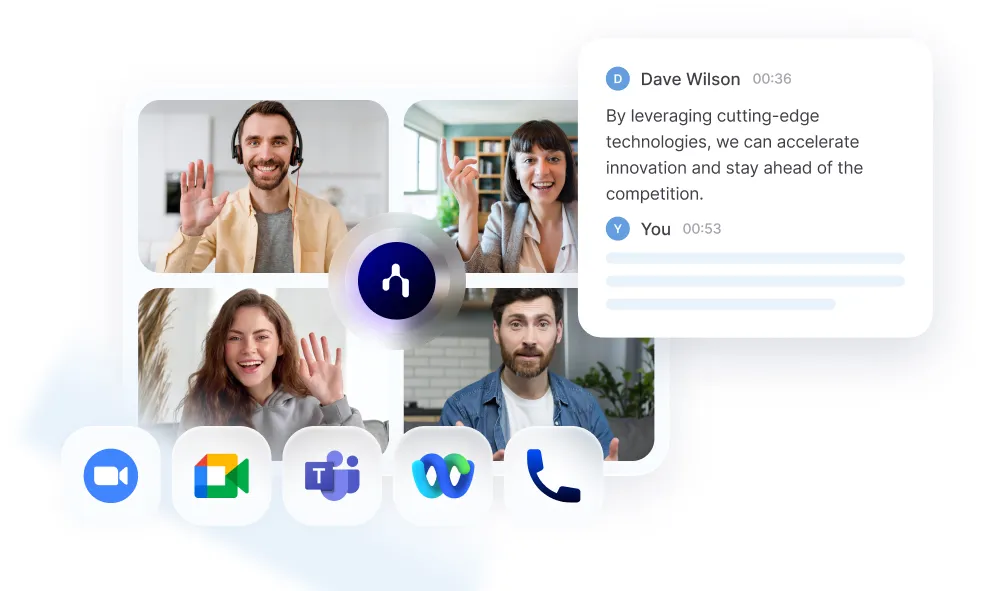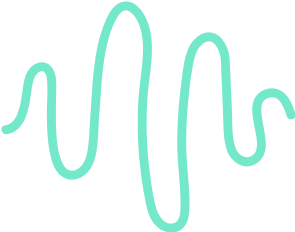Your team is growing. Projects are moving fast. But somehow, people still feel out of the loop. Sound familiar?
That’s where all-hands meetings come in.
We’ll show you exactly what an all-hands meeting is, who should lead it, how often to run it, and how to structure it for maximum impact.
What Is an All-Hands Meeting?
An all-hands meeting is a company-wide gathering where everyone—from leadership to interns—is invited to the same room (or virtual call).
The goal is simple: alignment.
This type of meeting gives leadership a chance to share key updates, big wins, company goals, and upcoming changes. It’s also a space where employees can ask questions, give feedback, and feel more connected to the bigger picture.
Unlike team meetings that focus on specific projects, an all-hands is about the business as a whole. It creates visibility across departments and helps everyone understand where the company is headed—and why.
Most companies use all-hands meetings to:
- Share financial and performance updates
- Announce strategic initiatives or product launches
- Celebrate wins and recognize teams or individuals
- Address challenges and clarify leadership decisions
- Reinforce company values and mission
But beyond the updates, all-hands meetings build trust. They show that leadership values transparency. They give everyone a voice. And they remind people that they’re part of something bigger than just their daily tasks.
Who Leads and Participates in an All-Hands Meeting?

An all-hands meeting is exactly what it sounds like—a meeting for all hands on deck. Everyone in the company is invited, from leadership to interns. It’s one of the few times when the whole organization comes together in the same space, physical or virtual.
But who actually leads the session?
Most of the time, it’s the CEO or a co-founder. Why? Because employees want to hear directly from leadership. It builds trust and reinforces transparency. When the CEO shares updates or answers questions, it signals that no one is too far removed from the people doing the work.
That said, all-hands meetings aren’t a solo act. Other executives often take turns presenting. You might hear from the Head of Sales about revenue goals. Or the Product Lead may walk through an upcoming launch. HR might share updates about hiring or culture initiatives.
The more departments involved, the more balanced the meeting feels.
How Frequently Should You Run an All-Hands Meeting?
There’s no one-size-fits-all answer. The right frequency depends on your team size, company goals, and how fast things are moving.
That said, most companies run monthly all-hands meetings. It’s often enough to stay aligned, but not so frequent that it becomes a burden. A monthly cadence gives leadership time to gather meaningful updates and gives employees a clear rhythm to expect.
Some fast-growing startups go weekly or biweekly, especially during key phases like product launches or funding rounds. These short, high-impact sessions help teams stay nimble and reduce confusion during times of rapid change.
On the other hand, quarterly all-hands may work better for larger or more stable organizations. In these cases, the meetings are often more strategic—focusing on OKRs, company-wide performance, and long-term planning.
No matter how often you choose to meet, what matters is consistency. Set a recurring schedule and stick to it. When people know the meeting is happening regularly, they plan for it—and show up more engaged.
All-Hands Meeting Best Practices

All-hands meetings can be a game-changer—or a time-waster. It all depends on how you run them. Here’s how to make sure your all-hands meetings are worth everyone’s time.
1. Start with why
Don’t just have an all-hands because “it’s on the calendar.” Open each meeting by setting the tone. Why are we here? What’s changed since last time? What should people walk away knowing?
This context helps people engage with purpose. It frames the rest of the meeting and gets everyone mentally in the same place.
2. Keep it focused—and short
Nobody wants a 90-minute monologue. Respect your team’s time by sticking to what matters most. Choose 3–5 key topics max. Use clear time blocks. If an update can be written in an email, skip it—or send it ahead of time.
Less is more. A tight 45-minute session is far more impactful than a rambling hour and a half.
3. Rotate voices
Hearing only from the CEO every time? That gets old. Let different departments present. Give the mic to someone in support, product, or marketing. Rotate voices and perspectives.
It builds cross-team empathy. It makes people feel seen. And it reinforces that everyone plays a role in company progress.
4. Celebrate wins, not just metrics
Too many all-hands meetings become a numbers dump. Data matters—but stories stick. Highlight customer success, showcase a new feature, or give a shoutout to a team that crushed a deadline.
People want to feel progress, not just hear about KPIs. Recognition boosts morale and reminds teams that their work matters.
5. Make space for questions
All-hands meetings aren’t just for talking—they’re for listening, too. Leave time at the end for live Q&A. Let employees submit questions anonymously ahead of time. Then answer them honestly, even the hard ones.
This builds trust. It shows you’re not just broadcasting—you’re listening.
6. Keep remote employees in mind
If your team is remote or hybrid, design the meeting for them first. Use reliable video platforms. Share slides ahead of time. Record the session for those in different time zones. And assign someone to monitor chat so virtual attendees can speak up.
Remote inclusion isn’t optional—it’s essential.
7. Always follow up
The meeting ends. Now what?
Share a brief recap, the recording, and any next steps. If there were action items or big decisions, document them. This helps reinforce the message and keeps momentum going.
All-Hands Meeting Agenda
Here’s a simple, ready-to-use all-hands meeting agenda you can copy, paste, and personalize:
Date: [Insert date]
Time: [Insert time + time zone]
Host: [CEO or meeting lead]
Duration: 60 minutes
1. Welcome & Opening Remarks (5 mins)
Host kicks off with a quick intro, highlights the purpose of the meeting, and shares any urgent announcements.
Example: “We’re 6 weeks into Q2 and already ahead of our targets. Let’s dive into what’s working—and where we need to level up.”
2. Company Performance Snapshot (10 mins)
Quick overview of KPIs, revenue, product usage, or other high-level metrics. Keep it visual and easy to understand.
Presented by: [COO / Head of Ops / Finance Lead]
3. Department Highlights (20 mins)
Each department shares key wins, challenges, and updates. Limit each team to 3–4 minutes to keep the pace up.
- Product
- Sales
- Marketing
- Customer Success
- People & Culture
4. Employee Spotlight / Recognition (5 mins)
Celebrate individual or team achievements. Give shoutouts. Share short stories that reflect your values in action.
Presented by: [HR Lead or rotating host]
5. Looking Ahead (10 mins)
Preview upcoming launches, goals, or changes. Share what’s coming next and what teams should expect.
Presented by: [CEO or relevant department]
6. Q&A (10 mins)
Live or pre-submitted questions. Use a tool like Slido or a shared doc. Answer transparently.
7. Wrap-Up & Key Takeaways (Final 2–3 mins)
Summarize what was covered. Confirm action items or next steps. Thank the team.
All-Hands Meeting Minutes
Here’s a simple, plug-and-play template you can copy, paste, and personalize after each meeting:
📝 All-Hands Meeting Minutes
Date: [Insert date]
Time: [Insert time + time zone]
Facilitator: [Insert name]
Notetaker: [Insert name]
Recording link: [Add link if available]
Slides link: [Add link if shared]
🔹 1. Opening Remarks
Presented by: [CEO or meeting lead]
- Brief welcome and meeting overview
- [Insert any urgent announcements or updates shared]
🔹 2. Company Performance Snapshot
Presented by: [COO / Finance Lead]
- [Insert key metrics shared]
- [Insert growth highlights or concerns]
🔹 3. Department Updates
Product:
- [Insert 1–2 key updates]
Sales:
- [Insert 1–2 key updates]
Marketing:
- [Insert 1–2 key updates]
Customer Success:
- [Insert 1–2 key updates]
People & Culture:
- [Insert hiring updates, engagement data, or initiatives]
🔹 4. Employee Recognition
Presented by: [HR Lead or rotating speaker]
- Shoutouts: [Name(s)]
- Reason: [Achievement, behavior, or milestone celebrated]
🔹 5. Looking Ahead
Presented by: [CEO or exec team]
- [Insert product launches, strategic goals, or upcoming priorities]
- [Insert dates or events teams should know]
🔹 6. Q&A Summary
- Question: [Insert question]
- Answer: [Insert response]
(Repeat for each question addressed)
🔹 7. Key Takeaways & Next Steps
- [Insert any decisions made during the meeting]
- [List clear action items, owners, and deadlines if applicable]
Structure, Transcribe, and Summarize Your All-Hands Meetings with Noota

Taking notes during an all-hands meeting is tough. You’re trying to follow updates, listen to leadership, and maybe even present—all while scribbling key takeaways. That’s how things get missed.
With Noota, you don’t have to choose between staying present and capturing what matters. It takes your all-hands meetings to the next level by automating the parts most people dread.
- Real-Time Transcriptions : Noota records and transcribes every word as it happens. No more frantic note-taking. Everyone can focus on the discussion, knowing there’s a searchable, accurate transcript waiting afterward.
- Tagging & Keyword Search : Want to revisit a specific update or decision? Tag key moments during the meeting or search the transcript later by keyword. It’s fast, reliable, and saves hours digging through raw notes or videos. Use tags for action items, questions, decisions—anything your team needs to come back to.
- AI-Generated Summaries : Long meetings don’t have to mean long reviews. Noota condenses the entire session into a clear, structured summary. It highlights what was said, what was decided, and what needs follow-up. Perfect for sending out post-meeting recaps that people will actually read.
- Seamless Integrations :Noota connects with tools your team already uses—Slack, Asana, Trello, Notion, and more. You can send meeting notes, tasks, and action items straight into your workflow.No copy-pasting. No forgotten follow-ups.
- Multi-Language Support : Running a global team? Noota supports multiple languages, so every voice is heard—and transcribed accurately. It’s an inclusive way to make sure no one misses a word, no matter where they are.
You want to streamline your all-hands meetings before and after meetings ? Try Noota for free.

.png)

.webp)


.svg)
.svg)
.svg)